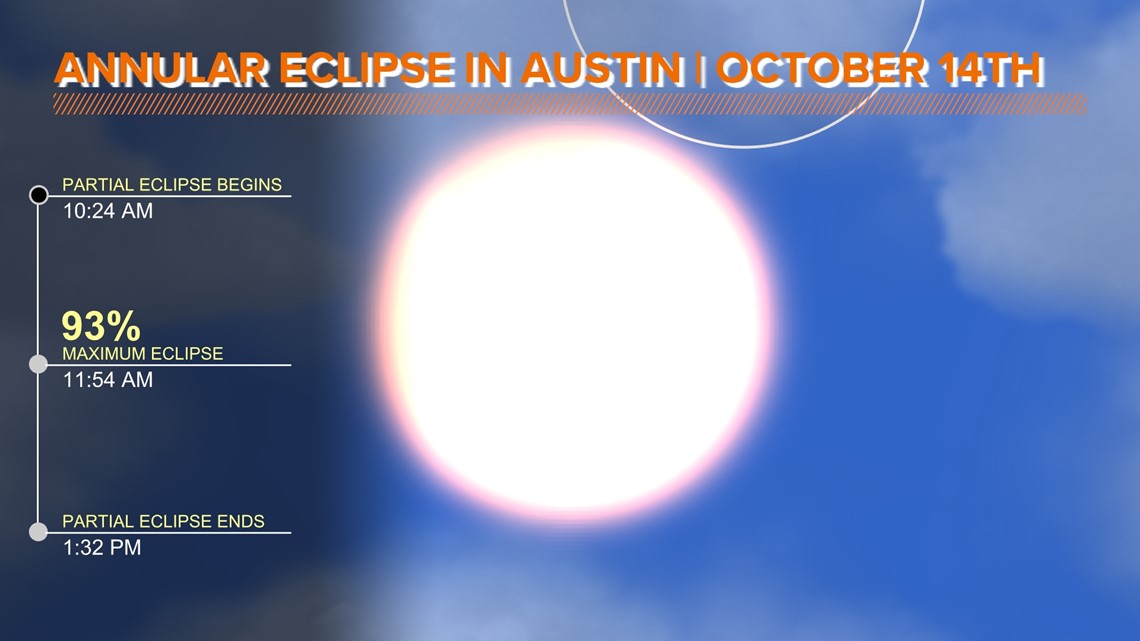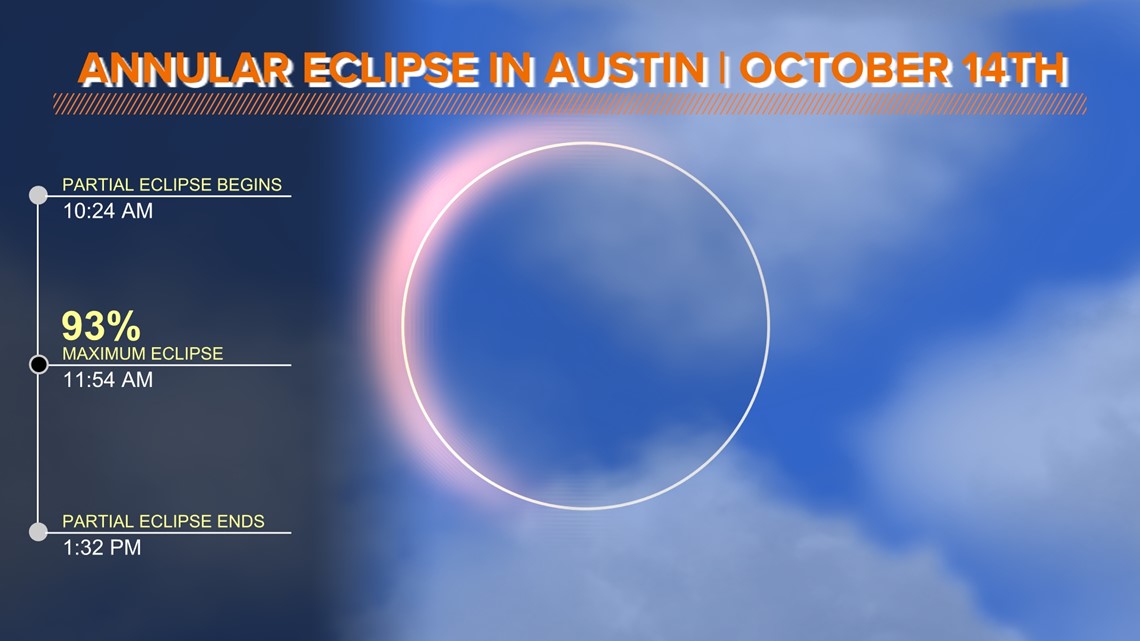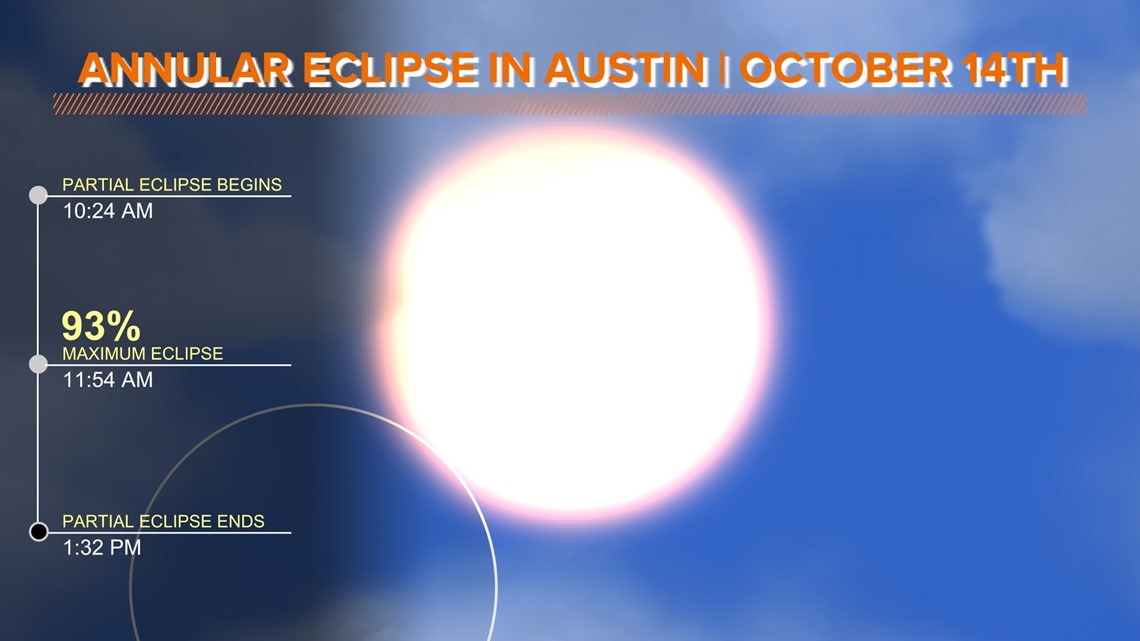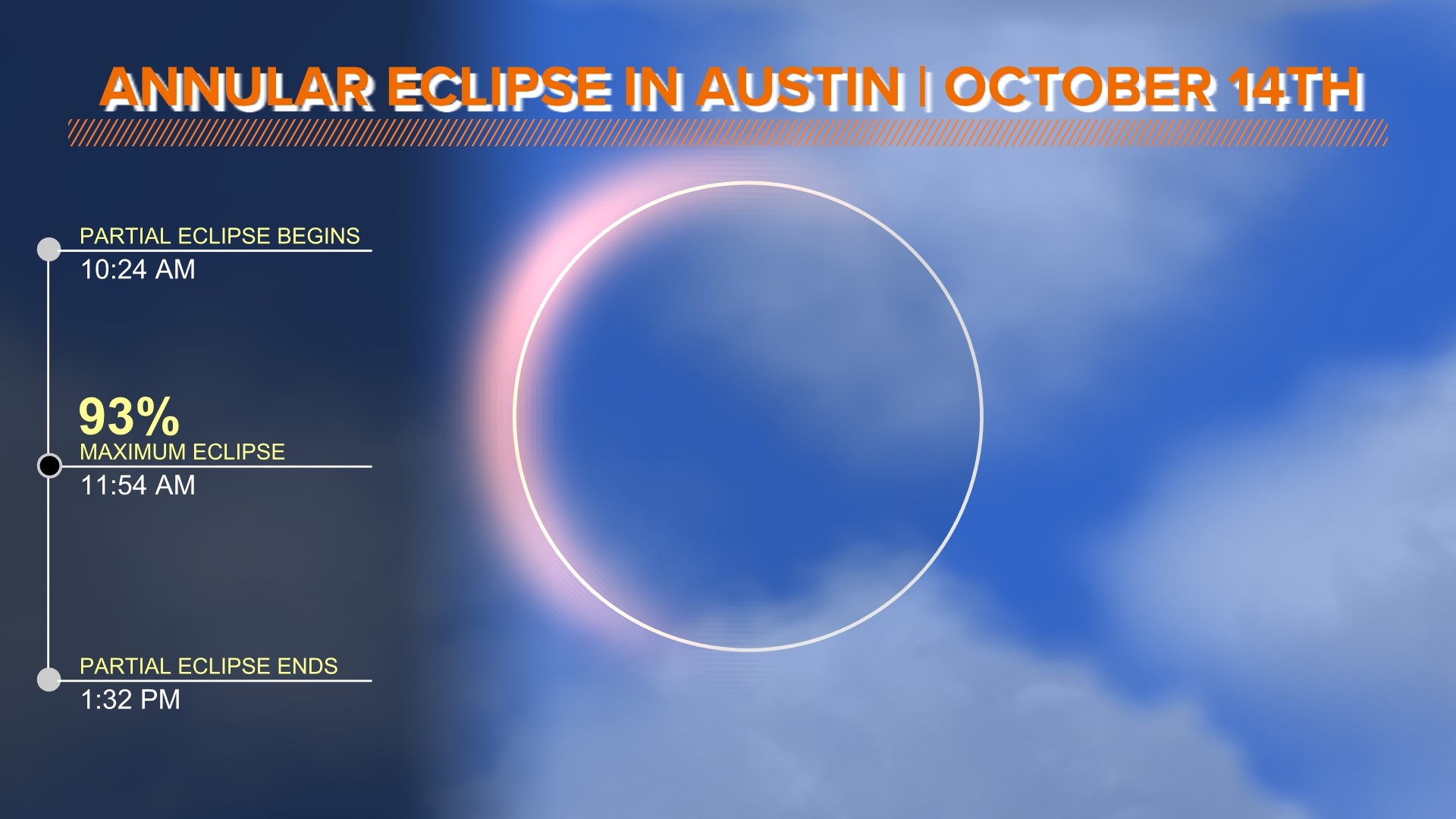AUSTIN, Texas — While many Central Texans are marking their calendars for April 8, 2024, when Austin and most of our area will be in the path of totality for the total solar eclipse, there's another little-known solar eclipse coming up much sooner. Sky-gazers can expect to see an annular solar eclipse on Oct. 14.
An annular solar eclipse takes place when the sun is momentarily blotted out from the sky but is never completely covered. Unlike the total solar eclipse on April 8, the sky will not darken as a result of this eclipse and the sun's rays will remain visible around the edge of the moon right in front of it.
Because of that, Torvald Hessel, an astrophysicist with the University of Texas at Austin, said this event may not get the attention that the event in April will have.
"The eclipse [in October] is ignored. People don't think that it's a big deal, [but] it can be very cool," Hessel said.
Hessel also said that unlike a lunar eclipse, location matters when it comes to a solar eclipse.
"You have to be in the right spot," Hessel said. "Austin is not in the center, so all you would get is a partial eclipse."
Hessel mentioned that the Oct. 14 event is a prequel to the April 8 event, especially in Texas.
"[The tracks] go right across [Texas] – what I've been saying, 'X marks the spot'". Hessel said. "Most people are talking about April 8th because it is a total eclipse that will be more spectacular, and people are ignoring October 14th."
Here's a timeline of how the Oct. 14 eclipse will play out in Austin:
10:24 a.m.: Partial eclipse begins
The first portions of the moon will begin blocking out the sun's rays.


11:54 a.m.: Maximum eclipse is reached
Austin is expected to have a 93% totality at its peak.


1:32 p.m.: Partial eclipse ends
The moon moves away from the sun.


Unlike the April 8 eclipse, there won't be an opportunity to remove safety glasses, as the sun at no point will be completely covered up by the moon. Even in the center, there will be parts of the sun's outer rays visible as a result of the moon is further away from Earth as opposed to the total solar eclipse. Because of that, protection – such as International Organization for Standardization (ISO)-approved specialized glasses – is important.
"In this case, it can burn your retinas and your retinas don't heal," Hessel said. "Once you have damaged them, you've damaged them for good. So you have to be careful with that."
All in all, it'll be an exciting sneak preview of what's to come on April 8, when Austin will be in the path of totality for the total solar eclipse.
"Get ready," Hessel said. "Get your glasses because everybody will sell out of them."

